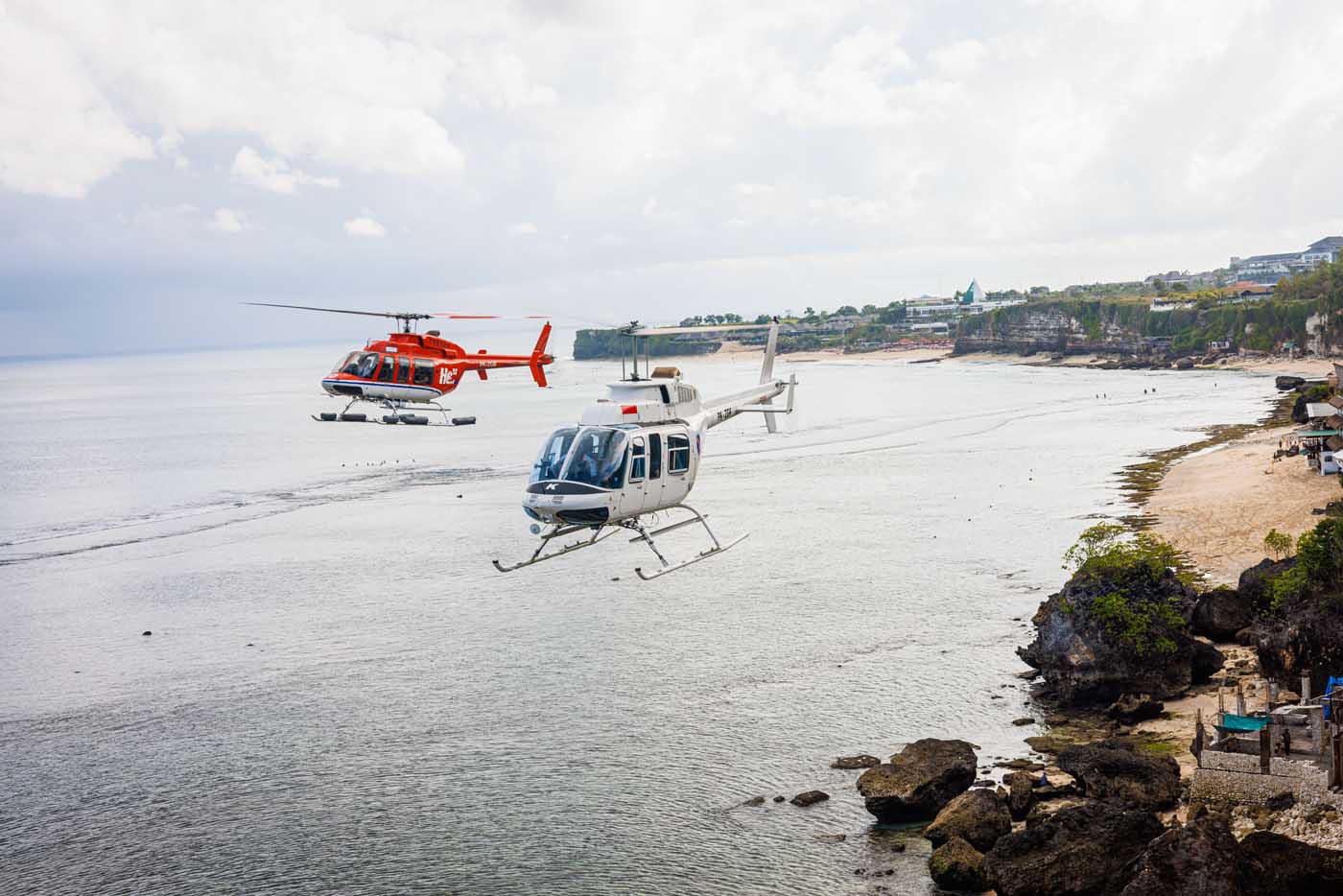High in the Indonesian mountains, the sound of an approaching helicopter fills a jungle clearing just large enough to contain the mining machinery upon which four men wait, their protective coveralls, gloves and helmets at odds with the tropical temperature.
As the noise of the engine and the rotor wash makes communication nearly impossible, they spring into action. Hands wave precise signals as over half a ton of steel framing floats down between the trees, suspended 200 feet below the helicopter by a line that hangs perfectly vertically.
Without as much as a sway, the frame glides into place on top of a mass of steel beams and joists, soon to be a mining exploration drill rig. A subtle hand-wave and it lifts barely six inches and settles again, perfectly aligned. And as the noise and wind of the rotors fade, the men clamber back over the machine to prepare for the next delivery courtesy of Heli SGI.
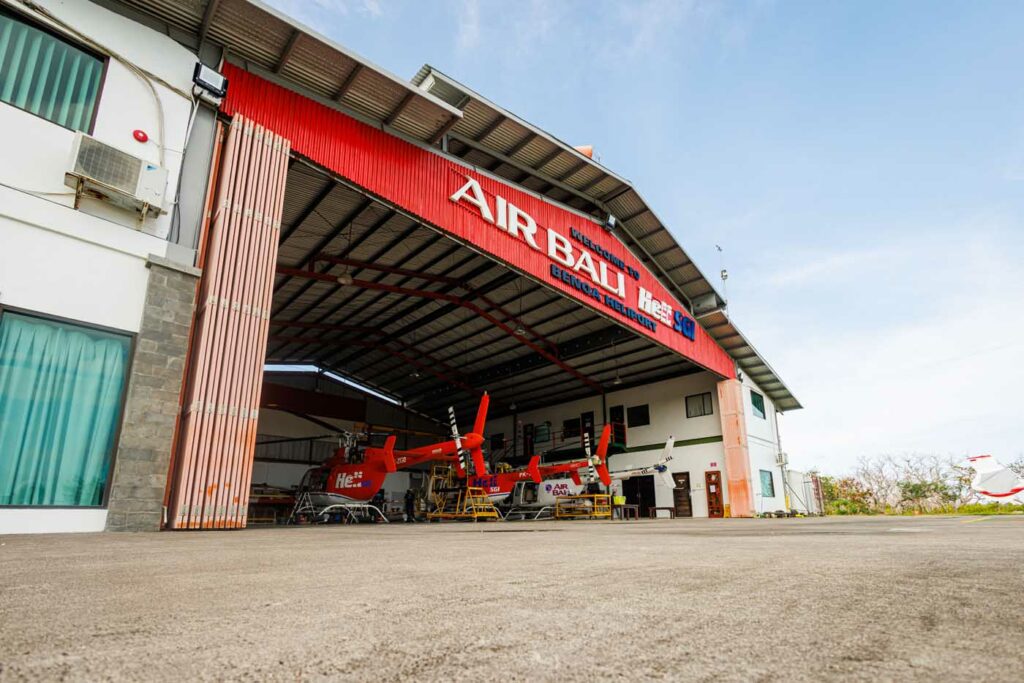
In the city of Denpasar on the island of Bali, the hustle and bustle of the markets and mopeds seems a world away from the jungle clearing. The other side of a country comprised of 17,000 islands and spanning three time zones, they might as well be. But it is here that Heli SGI is based.
Having begun as the first helicopter operator servicing the substantial tourism market here, it has since branched out.
Krisna Dewi is the commercial manager at Heli SGI. She started with them in 2006. “We started as Air Bali with just one Bell 206,” she explained. “Then we started to bring in LongRanger and 407 helicopters.”
As Indonesia’s most popular tourism destination, Bali was an ideal location. But its position in the country’s center also made it attractive as the base for much broader-reaching operations.

“We have always done tourism flights,” said Dewi. “And we began expanding into the mining operation in 2011.”
That expansion was enabled by investment from a joint Australian and Balinese-Indonesian company that made them co-owners, and also brought prior experience in the mining industry to Heli SGI.
“The new investor already owned other companies involved in mining,” said Dewi. “So we combined their experience with our experience operating here in Indonesia.”
The Air Bali name remained, now part of Heli SGI and serving as the company’s tourism arm, while Heli SGI focused on gaining a foothold in the mining industry. It was to be a rocky climb.
Numbers in safety
Indonesia is rich in a variety of minerals, many of which are critical to battery technology that is itself key to the green energy revolution. However, in 2014 the Indonesian government took steps aimed at preventing all the profits from their minerals from flowing overseas, and this generated considerable uncertainty.
With a single helicopter flying just 60 hours a month, Heli SGI was in a fight for survival. Dewi was serving in a business development role at the time, but had a vision of safety and quality forming the backbone of the company’s offer, and bidding for contracts with clients that understood the value of this approach. She would later be honored by Helicopter Association International with a Salute to Excellence Safety Award, but at the time, the strategy was a huge risk. Nevertheless, contracts came. By 2021, Heli SGI was flying between 600 and 800 hours a month and Dewi had been promoted to commercial manager.
“Things got tough,” she said, “but the company improved. We survived and this is where we are now, with nine helicopters supporting blue-chip mining corporations in Indonesia.”
François Lassale joined Heli SGI as the CEO after this period, bringing with him a background in offshore helicopter and operations management. He was very clear about just how much of a challenge Dewi and her colleagues had overcome.
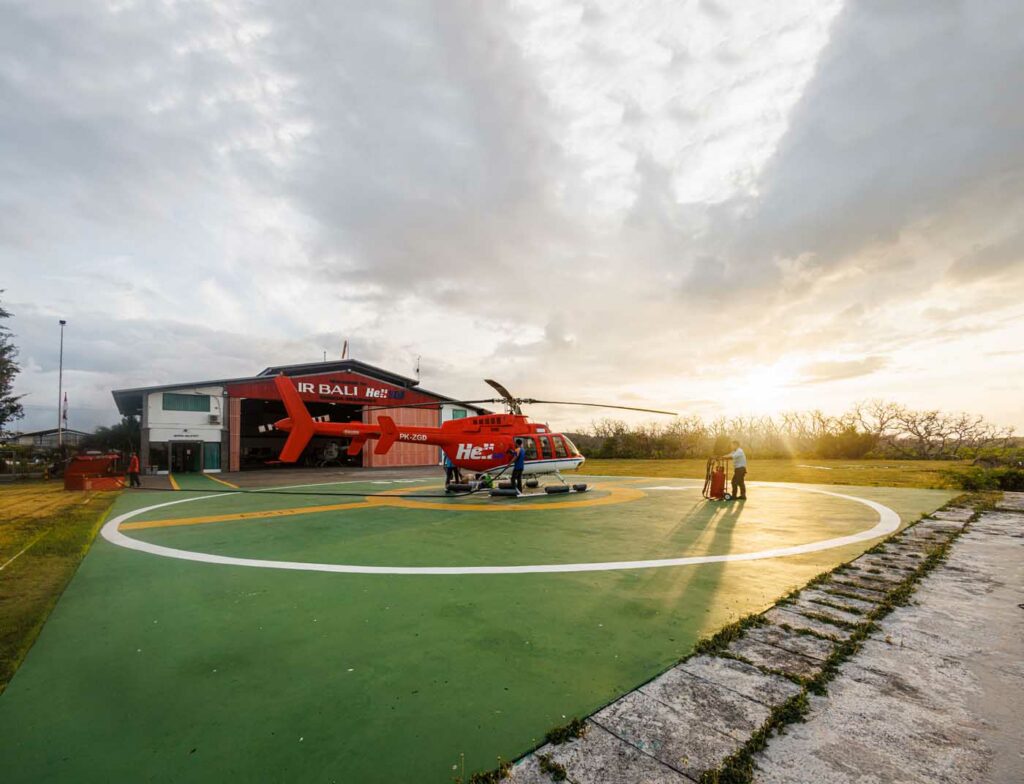
“Those contracts were hard fought and hard won,” he said. “There are unique challenges operating in Indonesia. You are bidding against competition who operate in different ways to you and therefore don’t have the same overheads.”
Lassale’s background emphasizes safety, and this has been reinforced starkly since joining the company, with Heli SGI aircraft recovering other crews after accidents.
“I’ve been here a year, and in that time we’ve done three rescues of our competitors,” he said. “We are BARS [Basic Aviation Requirements Standard] gold accredited, and we are one of the very few utility companies in Indonesia that has HUMS [health and usage monitoring system] and FDM [flight data monitoring].
While he shares the company’s passion for safety, Lassale himself admitted he was somewhat unfamiliar with helicopter utility flying when he first arrived.
“When I first got here, I questioned that the crews were only doing five hours a day,” he laughed. “Then I saw what they were doing for those five hours.”
Utility in diversity
At the heart of the Heli SGI mission is mining support, and this involves high-precision sling load flying.
“We put a one-ton load on a postage stamp,” said Lassale. “Get any swing on the load and you’ve potentially got a lot of fingers and hands in the way. Our customers have a very low tolerance for that.”
As carefully as the load must be flown, so too must the helicopter.
“Our guys are flying a 200-foot line in a jungle clearing that isn’t much bigger than the helicopter,” said Lassale. “So, you’re reaching down into the canopy to get the job done.”
Leading the cadre of those getting the job done is chief pilot Munawar Fatoni, whose career in the helicopter industry spans 17 years and began in the military. He has been with Heli SGI for four years.
“Our main challenge is the environment, because we operate in remote areas and in the mountains,” he said. “The weather can change at any moment, and that’s non-negotiable.”
The remoteness and the weather are driven to a great extent by the terrain, which is also severe. “Operation at high altitude affects aircraft performance, and at very high altitude also the pilot’s physical condition,” explained Fatoni. “We provide our pilots with high altitude training, including on the effects of hypoxia.”
Under these conditions, Heli SGI equips its people with everything they can to keep them safe, including oxygen systems. The company has bases around Indonesia, with the furthest being in the Papua region, around 1,240 miles (2,000 kilometers) from Bali and another two which are “only” a two-hour flight away.
“Where our challenge really lies is in the fact that our operations are quite spread apart,” explained Paul Doxey, the chief operating officer at Heli SGI.
An offshore helicopter pilot, Doxey previously ran Bristow Trinidad and was the base manager for one of Bristow Nigeria’s operations, so he is no stranger to having assets at several remote sites. He explained that it came down to selecting the right equipment and the right people.
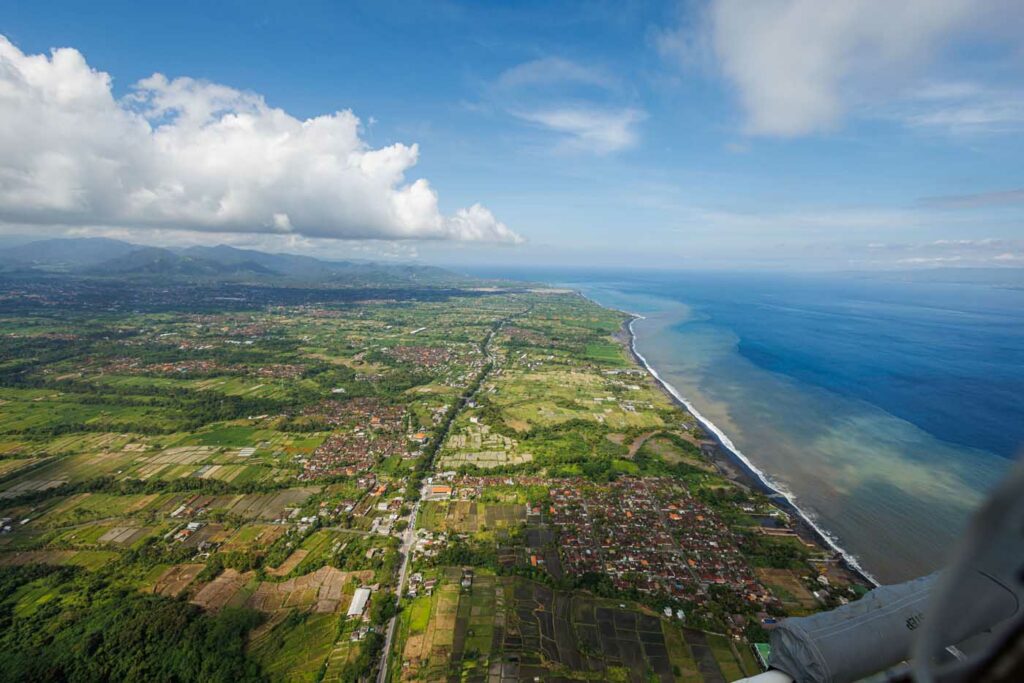
“It’s essential that we get the right people operating for us, because these operations are quite individual,” he said. “In these helicopters it’s single-pilot operations, so you need someone who has bought into the ethos of the company and is excellent at precision long-line work.”

This alone narrows the potential recruiting pool.
“We are building rigs in which a pilot will fly a half-ton load in and slide that load onto the bolts with very little movement,” explained Doxey. “It’s quite a unique skillset.”
Accordingly, Heli SGI maintains a high bar for new hires, who are required to complete psychometric testing and an airborne evaluation of their long line flying at the company’s own training site in Bali.
“We would expect our pilots to be able to put a load on a 200-foot long line onto a half-meter-by-half-meter [1.5-foot-by-1.5-foot) point without any sway or hesitation,” said Doxey.
Pilots will get plenty of practice slinging loads during “back-to-back” shifts, which allow them to spend as much time back home as in-country, commuting directly to the sites at which they work. This doesn’t afford the company much contact with them, and is something they are looking to change.
“They might not come to Bali because there might be no need for it,” explained Doxey. “Changing that so they are based here allows us to drive our culture, our vision and our values.”
Given the remoteness of its operations, knowing that its pilots have the right skills and values is essential to build trust between the company and its pilots. But both the company and the pilots also have to be able to trust the machines that they operate.
“In Papua, it’s expected that an aircraft that’s doing long line precision flying will operate up to 14,000 feet [4,270 meters],” said Doxey. “Just landing at that altitude can be a challenge, but that’s what our clients expect.”
As with the pilots, the requirements placed on the aircraft narrow the options available.
“Operating in this part of the world, Bell is the better OEM purely based on availability,” said Lassale. “We are the biggest Bell operator in the region.”
Heli SGI’s JetRangers and LongRangers are supplemented by 407s, one of which is an Eagle 407HP. Their medium twin-engine aircraft are a 212 and 412, which are owned by a client and managed by the company. With a Honeywell HTS900 replacing the OEM powerplant, the Eagle 407HP is the natural choice for high altitude work.
“We use the Eagle for many reasons,” said Lassale. “We’ve got it because of reliability and support, but we’ve also got it because of its downwash. You could put a 412 in to do a similar operation, but you’d blow the hut and all the miners away.”
Maintaining confidence
Despite hangars currently being filled with Bell helicopters, and having another two 407GXPs on order, Heli SGI is keeping its options open as it anticipates modernizing its fleet.
“There is nothing in the pipeline to replace the 407,” said Lassale. “It’s a good workhorse that has served us very well, but they’re starting to get a bit long in the tooth.”
The aircraft might not be young, but they come with the benefit of spares availability and a raft of engineering knowledge that only years of operation will get you.






“The aircraft are in great condition, and are subjected to extremely high standards of maintenance,” said Lassale.
Responsible for keeping them that way is technical manager Raymond Denysschen. He may be the self-confessed introvert of the company, but he is very quick to point out what gives Heli SGI its competitive advantage.
“Our maintenance standards are extremely high, evidenced by the minimal amount of downtime we have on-site,” he said.
With spares taking three days to get from the Bali headquarters out to some of Heli SGI’s worksites, the company couldn’t afford it to be any other way. Denysschen explained that’s down to preventative maintenance, experience and high standards.
“With our high utilization of the aircraft, we do a lot of maintenance and we go deep into it,” he said. The company also trains the majority of its engineers directly from graduate school, with 92 percent of the maintenance staff being Indonesians.
“We bring in a lot of graduates, so we don’t have to untrain bad habits,” explained Denysschen. “We are in a unique place to train them in these kind of skills, so when they do go out into the field their skill level is much higher, and in the rare case where we do have a snag onsite, they are capable of fixing the snag quickly.”
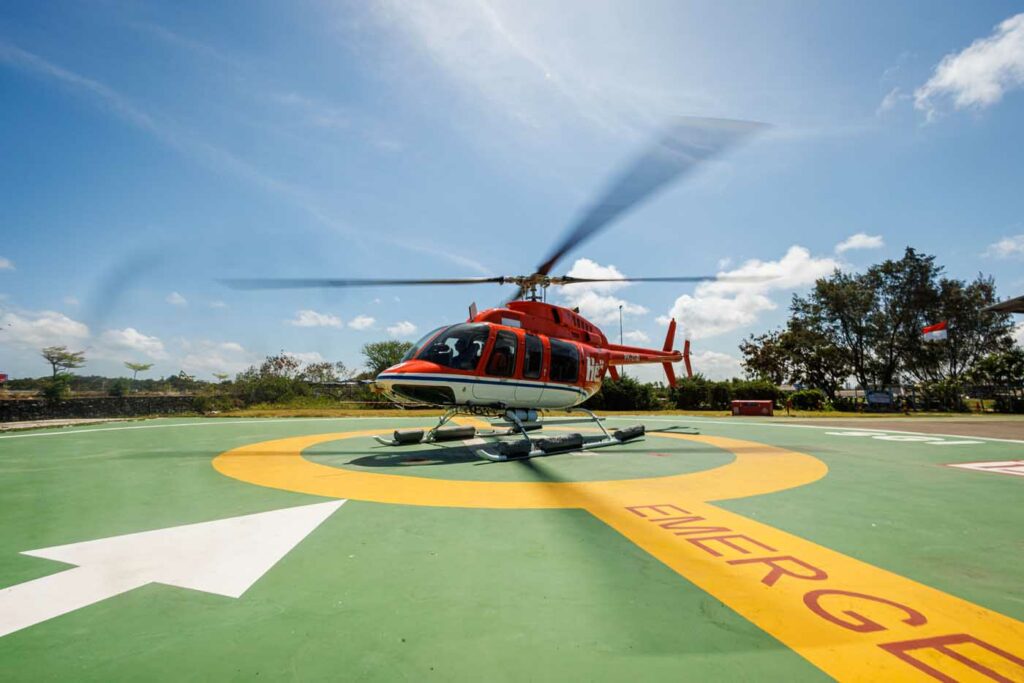
This attention to maintenance is part of the bedrock of trust that enables the company to function, as Lassale explained.
“We put a huge amount of emphasis into the maintenance of those aircraft,” he said. “That allows Paul and Raymond and the pilots flying them to go home and sleep soundly at night.”
With a company and a CEO determined to deliver performance on the basis of trust and experience, few opinions can be as valuable as those of Krisna Dewi.
“I’ve been doing this for 16 years and I know a lot of operators here in Indonesia,” she said. “I feel truly blessed to be working with this company, where I have total peace of mind that we are doing things the right way.”





